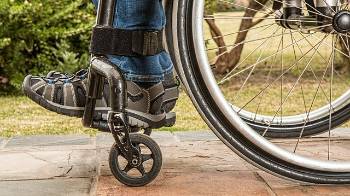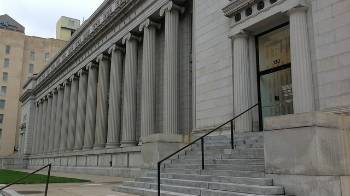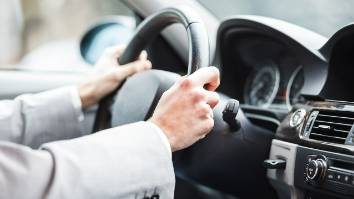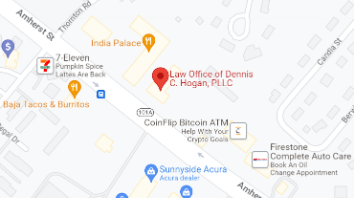Drop Your Block Here

Drop Your Block Here
NASHUA, NEW HAMPSHIRE

Drop Your Block Here
Speed, Lookout, Evasive Action, Point of impact and Right of Way. These are the factors professionals of liability insurance and tort law use to determine who is at fault. They keep in mind how a reasonable driver would react under the circumstances.
Drop Your Block Here
The rules of the road determine the reasonable behavior of each of us as a driver. We start learning them even before we take the wheel of our parent’s car to drive under their supervision. In the United States and Canada we drive on the right side of the road. We wait for vehicles to pass by before entering the road. We learn more rules taking a driver education course: Left turns are yield turns so wait for traffic to pass before turning left. Some rules we only know because they are in statutes like travel no closer than 100 feet behind an emergency vehicle. Some rules it is clear that a large segment of the population either don’t know or don’t car to follow: Bicycles belong on the right side of the road riding with traffic. If you are violating one of these rules of the road and have an accident with another vehicle, you likely violated the right of way of the other vehicle because you did not have the right of way.
The faster a vehicle is traveling the less chance that vehicle will have to avoid an unexpected situation that confronts the driver. Therefore, the liability put on the driver in an accident will increase proportionally to the perception that the driver was going an unsafe speed. 65 miles per hour is a safe speed on an open interstate highway. However, if there is snow accumulating and traffic backing up on that same interstate highway, 65 miles per hour is probably not safe and would be judged unreasonable if an accident occurred because a driver failed to notice these two important factors. Twenty miles per hour is generally a safe speed in a residential neighborhood. However, if five year olds are playing with a ball close to the street that might be judged to have been an unreasonable speed to travel if one of the children chases the ball in front of your car.
What speed the vehicles were traveling can be difficult to know. The driver is generally asked by a responding police officer but the accuracy of the driver may be limited by his wishful thinking. Other methods to learn the speeds of vehicles are skid marks left on the road and damage to the vehicles. The type and condition of the road are important when analyzing skid marks because dry asphalt will stop a vehicle faster than wet asphalt. The amount of damage to the vehicles indicate speed because of the physics principle that force equals mass times acceleration. In other words, you swing a hammer fast to hit a nail because bringing the hammer slowly to the nail will not create enough force to move the nail.
Drop Your Block Here
Schedule a CONSULTATION
Lookout is the idea that, while driving, everyone is responsible to stay alert to the situation around them. A driver can follow the rules of the road, maintain a slow and safe speed and still cause an accident by failing to see that there is a new factor to change what is reasonable. A car may have broken down before it could pull to the side of the road and has been in the same spot for several minutes or more. A child may have entered the road unaware of the danger. A very new or very old driver may have entered the roadway causing an alert driver to need to brake.
To describe the accident as “I could not stop in time when I saw the problem” is OK if there was no reason to anticipate a problem. For example, “I was traveling the speed limit at night when the unlit car, sideways in the road, suddenly appeared.” However, if there is reason to anticipate a problem it is not OK. For example, “The cars in the right lane had stopped but I was in the left lane continuing at the speed limit and saw the problem too late to avoid striking the car stopped in the left lane ahead of me.”
Evasive Action
Evasive action is what a driver does in reaction to seeing a problem. If another car violates your right of way by crossing in front of you in your lane the reasonable thing to do is brake to slow your car. It is unreasonable to accelerate to hit the other vehicle with increased force. If another car is stopped on the right side of the road but in the lane of travel so that your vehicle will hit it if you continue without change of direction, then it is unreasonable to continue in the same manner or to turn right to hit the vehicle at a different angle. Sometimes the best reaction to the situation is debatable such as when it happened on icy conditions or at a high rate of speed on the interstate. The question becomes what a reasonable driver would do under the same circumstances.
The portion of your vehicle that strikes or is struck by the other vehicle is an indication of what was happening. While moving forward a driver is expected to have more control over things hitting the front of the car than the driver has control over things that strike the car in the rear. The most obvious example is a car driving its front into the rear of a stopped vehicle. This is almost always judged 100% at fault. This is commonly referred to as a “rear ender.” Everyone understands that if they are stopped and hit on the rear by another car there is nothing they could have done to avoid it.
In a four way/four stop intersection the degree of fault is generally assigned in the proportion that an impact happens to the front of the car. Impact to the front of the car indicates a driver could have seen the problem and perhaps done more to avoid the collision. An impact to the rear tends to indicate that the driver was already in the intersection before the problem developed. It could also indicate that the driver turned away so that the impact did not happen to the front of the vehicle.
Knowing the point of impact both on the vehicles and on the road allows for simple recreations draw on a page or set up with models. We can then ask ourselves while looking at the instant of the impact what could have gone on prior to that moment.

PERSONAL INJURY
CLICK FOR MORE INFO

BANKRUPTCY
CLICK FOR MORE INFO

CRIMINAL DEFENSE
CLICK FOR MORE INFO

Drop Your Block Here
Today _:__ __ - _:__ ____
Monday9:00am - 5:00pm
Tuesday9:00am - 5:00pm
Wednesday9:00am - 5:00pm
Thursday9:00am - 5:00pm
Friday9:00am - 5:00pm
SaturdayClosed
SundayClosed
CONTACT ME
PHONE
603-886-8700
LOCATION
491 Amherst St. Ste 22A
Nashua, NH 03063
Leave a Review
ABOUT ME
An attorney who is motivated and experienced is waiting to help you with your law needs.
Whether you need representation for personal injury, bankruptcy, or criminal defense or needing advice with adjuster & liability insurance, I have the expertise to help you.
LOCATION

© 2024 Law Office of Dennis C. Hogan, PLLC All Rights Reserved. 491 Amherst St Ste 22A, Nashua, NH 03063 . Contact Us . Terms of Service . Privacy Policy
Drop Your Block Here
Drop Your Block Here